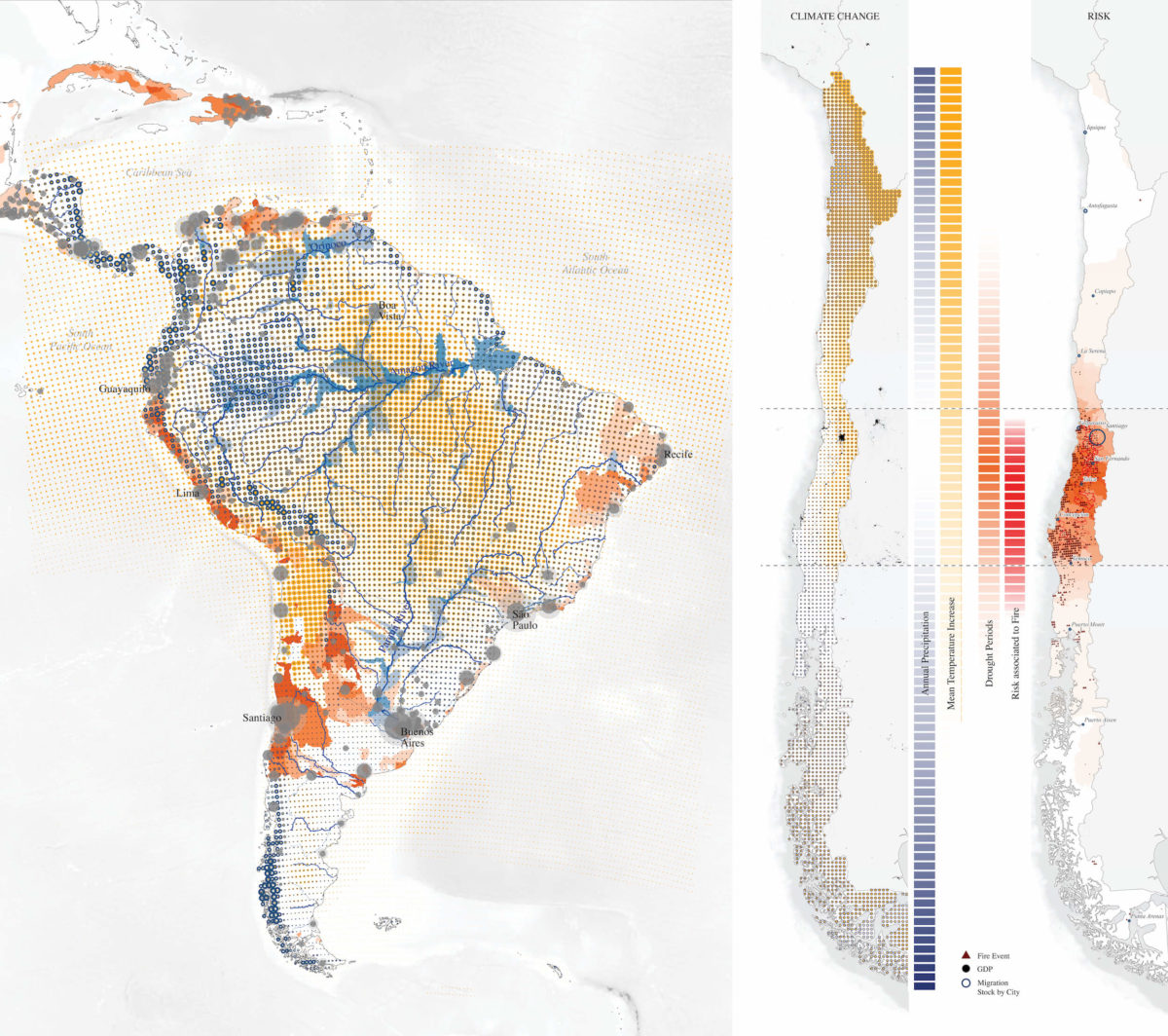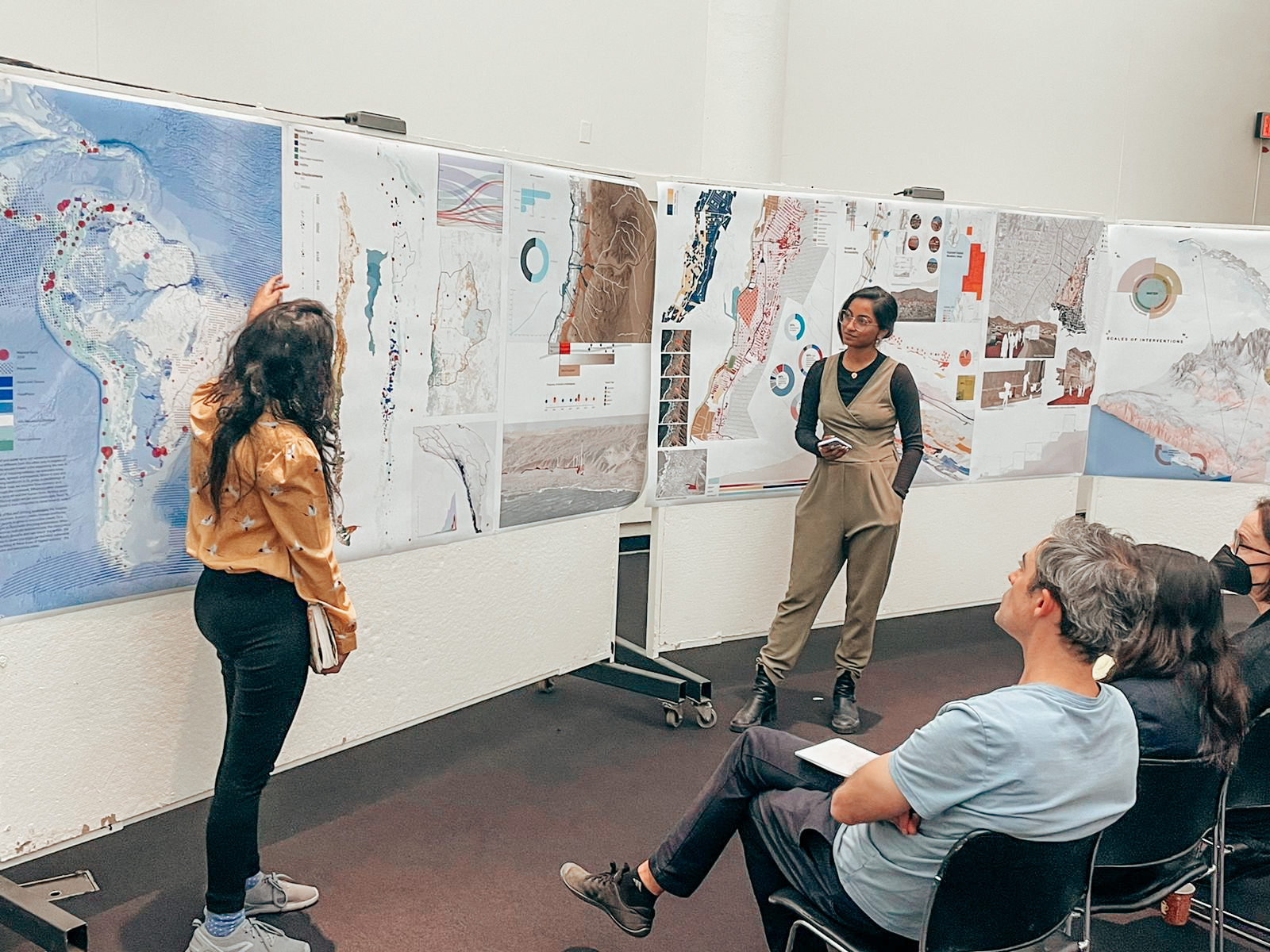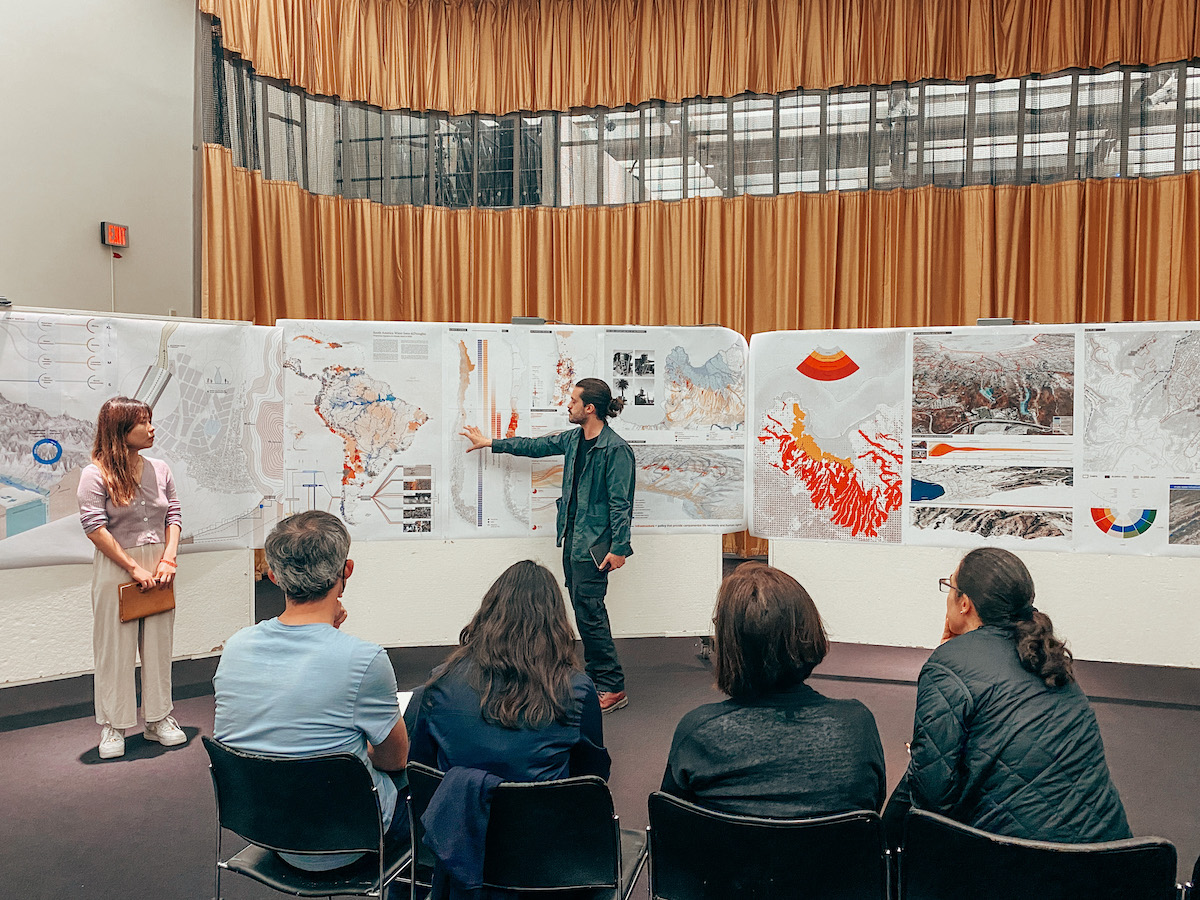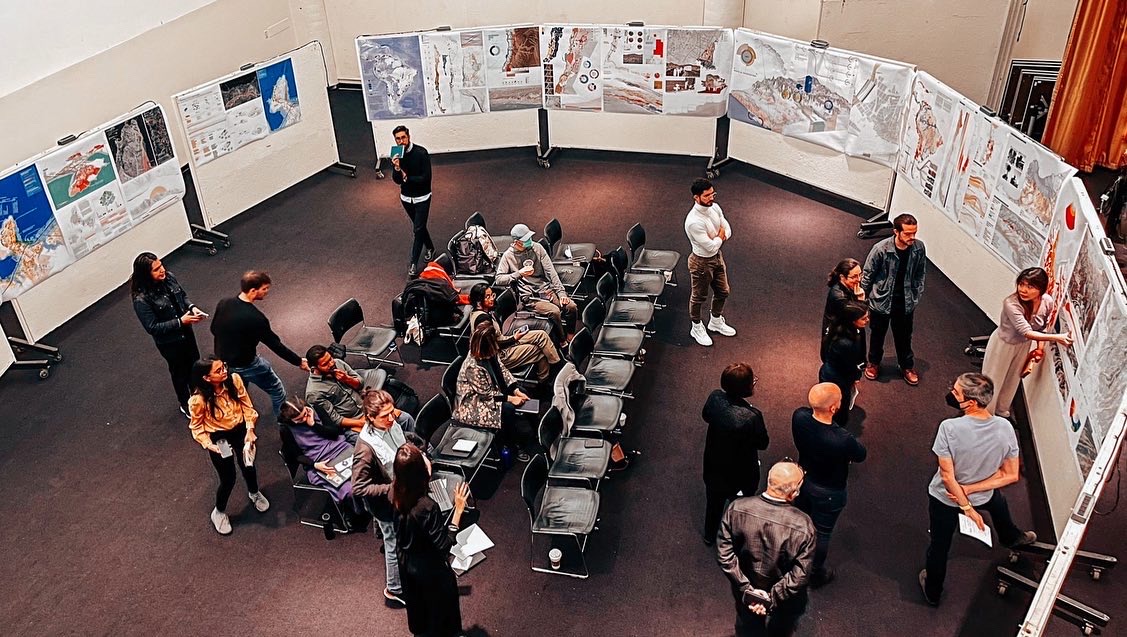Infrastructure, in conventional imaginations, exists as a tool of permanence: bridges, roads, sidewalks, and utilities are eternal public goods. Climate change has challenged that reality; extreme, less predictable climates have generated new discourses in adaptation and flexibility as core components of infrastructural resilience in the face of uncertain futures. Design Critics in Urban Planning and Design, Soledad Patiño and Felipe Vera are approaching the notion of adaptable, flexible infrastructure through the lens of climate-related migration. As researchers focused on vulnerable communities and environments in Latin America, their course, “Latin America in Transition: Imagining Infrastructures for Climatic Migration” is an opportunity for Harvard GSD students to explore potential systems and interventions that can prepare countries to receive an increasingly unpredictable flow of refugees.
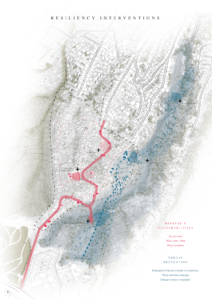
Migration, says Vera, isn’t new in this region, but Latin America is facing two distinct types of transitions: intensification of intra-regional flows, and compounding vulnerabilities. “If we look at the vulnerability profile of migrants, what we might find is that they used to be less vulnerable. Migrants used to move across the continent for aspirational reasons—to find better jobs or education. But today, what we’re seeing more and more is that migration has become a forced migration,” he says.
Climate disasters, such as increased flooding or drought that in turn impact food security, sanitation, and health, will certainly increase the numbers of those seeking refuge; the World Bank predicts that more than 140 million people will be displaced by climate change by 2050. The hunger and low income and other layers of hardship experienced by migrants exacerbate their vulnerability. This, says Vera, is contextualized in a region that is in flux; it requires a greater number of cities to absorb more people. Those cities, Vera and Patiño explain, are not prepared.
It is important to think of environmental immigration, not only as a shock and compulsive displacement of people, but also as processes.
Soledad Patiño
“Migration today and in the near future will be a great challenge for cities because it’s very easy to accommodate a migrant flow that comes incrementally, but when it comes suddenly, then you have resistance from the communities. And there are a series of challenges that infrastructure, services, and institutions are unable to address,” says Vera.
Patiño (MAUD ’20), an Argentinian architect and urbanist, has studied and published on issues surrounding extraction and urbanization in Latin America and sanitation infrastructures in Mumbai; Vera (MDes ’13), a Chilean architect, urbanist, and leader of the Integration of Vulnerable Neighborhoods Program, has focused on urban design and planning, migration, and ecology in vulnerable contexts. Their course will generate speculative design strategies using their research, data analysis, case studies, and the expertise of guest lecturers.
“The main goal of this studio is to provide the space to speculate about what will be required to create adaptable infrastructure to integrate migrants into the city and also to reduce their environmental vulnerability,” explains Patiño. The studio is focused on four different cities and settlements within Chile, a country has experienced a great influx of migrants. According to Vera, in 1990, only three percent of people living in informal settlements in Chile were migrants. In 2019, 30 percent of residents of informal settlements were migrants. Students have been developing extreme weather climate scenarios for 2050, moving to the city and settlement scale in order to analyze risk. Then, students define “domains of engagement,” says Patiño, which allows them to determine the scale of intervention projects required; some will be architecture or urban design projects, but all will deal with tackling climate risks.
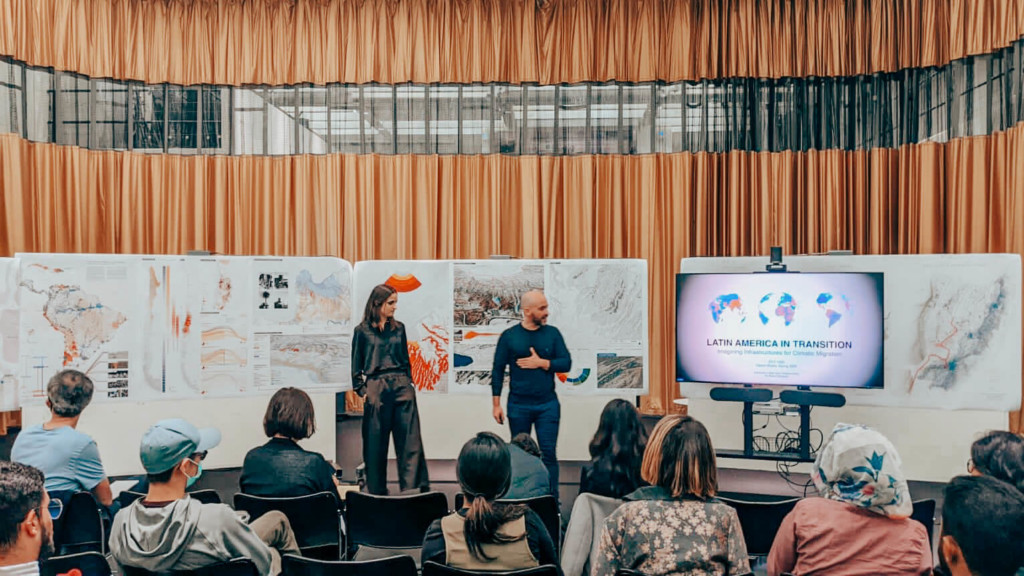
Students are working across issue areas, including heat, fire, and the lack of water, as well as coastal cities’ risks from rising seas, and analyzing what Vera calls “wetness”—the changes in quantity of water in different formats around the city. Much of the students’ research comes from risk atlases and demographic studies, but Vera and Patiño have also invited representatives from Chile’s Ministry of Housing and Urban Development to help prepare students to work at both the settlement and state levels.
“That duality is very interesting because you see who is making the decisions on the one side, but at the same time you’re able to address them with people that have to put their hands on the ground and do things and make things happen,” says Vera.
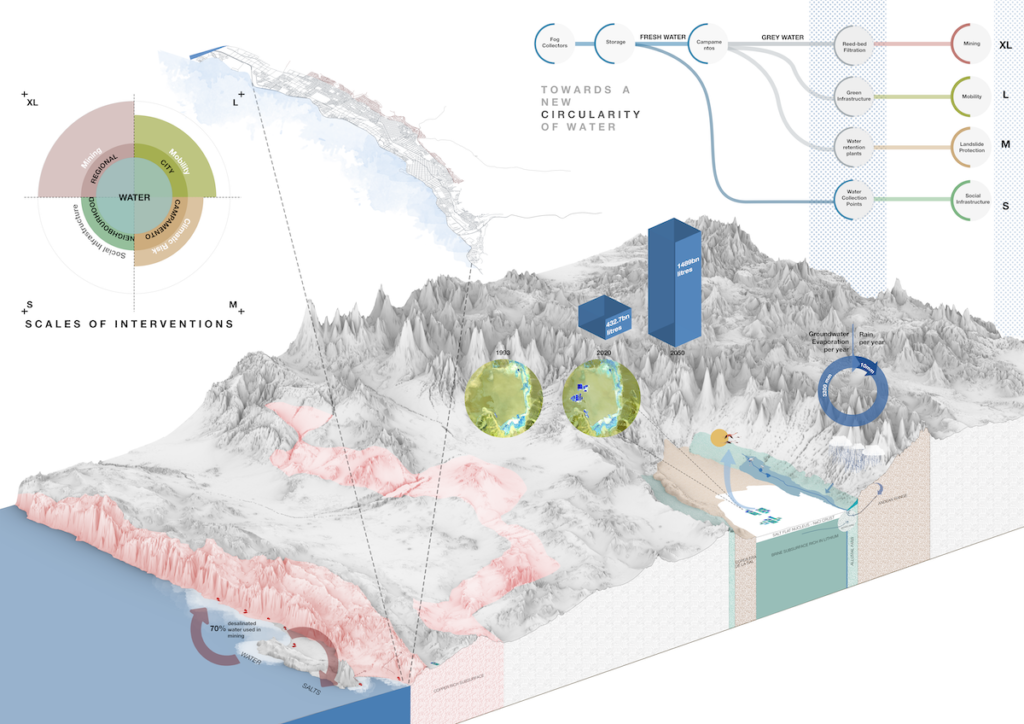
Generating these types of design speculations is challenging, however, as climate change makes the weather increasingly less predictable. Studies into migratory impacts show that foresight into the movement of people in response to climate disasters is “fuzzy,” says Vera. And according to the 2022 Intergovernmental Report on Climate Change, “Climate-related migration is expected to increase, although the drivers and outcomes are highly context specific and insufficient evidence exists to estimate numbers of climate-related migrants now and in the future.”
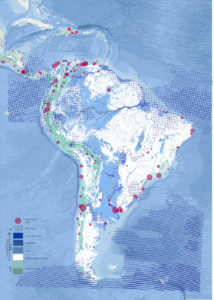
As a result, flexibility becomes key in students’ designed interventions and presents an opportunity to rethink the normative understanding of static infrastructure. “We design permanent infrastructure, but when you have migration, you have to design for flux. And designing for flux really challenged us to think about infrastructure in another way,” says Vera. “We have to think of the way in which migrants will move across a territory; we’ll have to consider what are those infrastructures, both physical and social, that have to deal with migrants in bordered conditions within the recipient communities?”
The emphasis on flexibility in these speculative proposals for climate migrant infrastructure allows cities and regions to prepare for the movement of people, but it also reframes the problems with migrants and refugees as a part of a process. “It is important to think of environmental immigration, not only as a shock and compulsive displacement of people, but also as processes,” says Patiño. “For example, we are talking with students about the effects of agricultural disruption and how this is framing new forms of migration within cities and countries, because land is becoming less productive. So we should also be thinking about migration as part [of] these processes. The shift from perceiving climate migration as a “shock” toward seeing it as a process could also help communities receiving migrants adjust socially, making migrants a more welcome force for positive change.
If we don’t do the work well, we will lose the opportunity to have migration as a driver for development and growth.
Felipe Vera
Patiño and Vera are providing a space for careful synthesis of data, information, and knowledge about climate migration to equip students with tools and strategies not only to design civic infrastructure that can adapt to uncertain futures, but also to ensure a more just and equitable world. “If we anticipate correctly, migration is an opportunity,” says Vera. “There is a lot of research about how, when cities are prepared to properly absorb migration, migration is a driver for economic prosperity, for multicultural environments. If we don’t do the work well, we will lose the opportunity to have migration as a driver for development and growth.”
